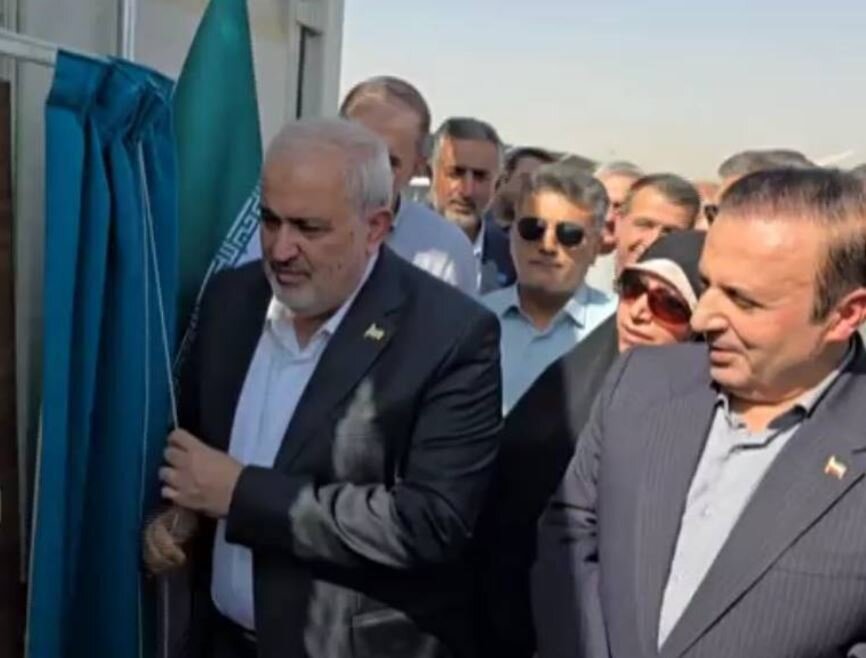Solar power plants opened in Qazvin with 6 MW capacity

TEHRAN – Energy Minister Abbas Aliabadi inaugurated two solar power plants with a combined capacity of 6.0 megawatts on Tuesday during a visit to the province, marking the first step in the government’s “Abad Iran” development campaign.
According to state media, the projects were launched in Abyek county, Qazvin province, with an investment of around 18 trillion rials ($36 million).
Iran’s Renewable Energy and Energy Efficiency Organization (SATBA) on Sunday invited qualified companies to apply for the construction of solar power plants with financing from the National Development Fund (NDF).
According to SATBA, applicants holding contracts to build solar facilities with a capacity of at least three megawatts can register their requests on the SANA platform between August 17 and August 22, 2025.
The call is part of a broader plan to build 7,000 megawatts of solar power capacity under a decision by the Supreme Economic Council earlier this month.
Officials said the program aims to accelerate investment in renewable energy and strengthen Iran’s power generation mix with the backing of the sovereign wealth fund.
In late July, Iran’s Supreme Economic Council approved a $3.2 billion investment from the National Development Fund to support the construction of 7,000 megawatts of solar power capacity, with a focus on rooftop units.
The decision, based on a directive issued by the Leader of the Islamic Revolution allowing the NDF to invest in the energy sector, was announced by Vice President Seyed Hamid Pourmohammadi, who also heads the Planning and Budget Organization. The authorization has been formally communicated to the Energy Ministry and the NDF.
The investment will prioritize solar systems that feed electricity directly into local distribution networks, particularly small-scale rooftop units installed by households or private entities. These decentralized systems are expected to enhance grid stability and reduce pressure on traditional power plants.
The financing structure allocates 80 percent of the required capital to the NDF and 20 percent to private-sector participants. Each investor can apply for up to 1,000 megawatts of capacity, with returns for the sovereign wealth fund set at an annual rate of eight percent in hard currency.
The NDF will disburse the funds through an intermediary financial institution tasked with managing cash flow, credit oversight, and market operations.
To encourage private participation, the Energy Ministry—through its Renewable Energy and Energy Efficiency Organization—will guarantee the purchase of unsold surplus electricity at up to 70 percent of the average green energy price on the Iran Energy Exchange. This guarantee will be facilitated through “future electricity bonds,” a new financial tool introduced to boost renewable project bankability.
The announcement comes as Iran accelerates efforts to expand renewable energy production amid rising domestic demand and the long-term need to diversify away from fossil fuels. Officials say the country aims to install 10,000 megawatts of renewable capacity in the near future, with rooftop solar playing a key role in meeting both environmental and grid resilience goals.
Last week, SATBA announced that electricity generation from solar power plants rose by 71 percent in the first four months of the Iranian year starting March 20, compared to the same period last year.
SATBA Head Mohsen Tarztalab said solar output increased from 357 million kilowatt-hours to 610 million kilowatt-hours, while wind power generation rose from 413 million kilowatt-hours to 432 million kilowatt-hours.
Iran’s installed renewable capacity has reached 1,868 megawatts, up from 1,232 megawatts in late July last year, with 636 megawatts of new plants added over the past year. Renewables now account for 1.9 percent of the country’s total power generation.
Tarztalab said the first phase of a 7,000-megawatt renewable energy development program, mostly solar, has been planned and finalized, aimed at reducing the country’s power deficit.
He added that the share of renewables in Iran’s power mix will exceed 5 percent by year-end, describing the country as “a vast construction site” for clean energy projects, with the effects of what he called a “major revolution” in the sector expected to emerge in the coming weeks.
In recent months, SATBA has signed multiple agreements with domestic and foreign investors to accelerate renewable capacity expansion, including utility-scale solar farms in desert regions and hybrid systems combining solar with battery storage. The government has also rolled out new feed-in tariffs to attract private-sector participation.
Energy officials have repeatedly said that boosting renewables is central to easing summer blackouts, which have plagued industrial and residential users in recent years. Alongside solar and wind projects, Iran is pursuing geothermal and biomass initiatives, though these remain at early stages compared to its solar ambitions.
Iran’s climate and geography offer high potential for renewable generation, with vast areas of high solar irradiance and strong seasonal winds in the north and southeast. The latest figures underscore a rapid acceleration in clean power development after years of slower growth.
EF/MA
